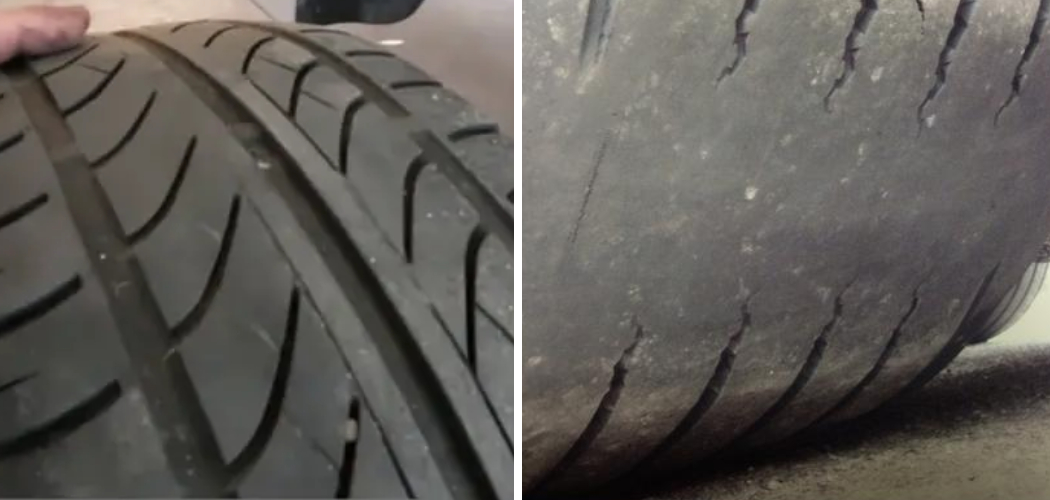Have you ever noticed certain areas on your car tires that seem to be worn down more than others, leaving light-colored squares or spots? Those are called flat spots and they happen when your tires sit in one place for too long without rotating. Flat-spotted tires can negatively impact your vehicle’s handling and ride quality.
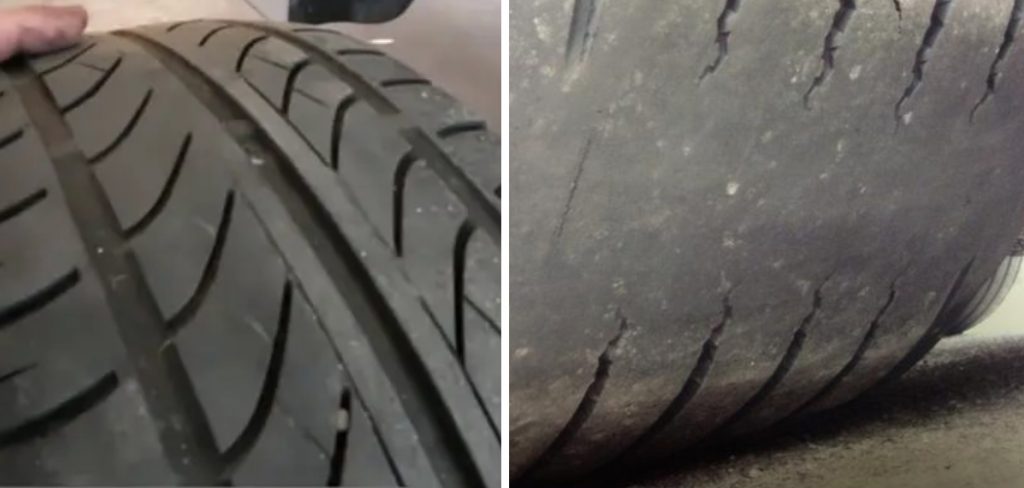
In this post on how to fix flat spotted tires, I’ll explain in detail what causes flat spots to form, the signs to look for that indicate you have them, and some simple steps you can take to fix flat-spotted tires or prevent the issue in the future. By the end, you’ll have a good understanding of this common tire problem and how to address it to keep your tires performing at their best.
Why Do Flat Spots Form?
As mentioned earlier, flat spots on tires are caused by prolonged periods of stationary contact with the ground. This can occur when a car is parked in the same spot for an extended period or when a vehicle sits unused for long periods, such as during storage.
When this happens, the weight of the vehicle compresses and deforms the rubber in one area of the tire, resulting in a flat spot. This can also happen when tires are overinflated or old and worn out.
Signs You Have Flat Spotted Tires
The most obvious sign of flat spotted tires is the visible presence of light-colored squares or spots on your tires. These spots may also feel harder to the touch than other areas of the tire.
You may also notice a vibration or thumping sensation while driving, especially at high speeds. This is caused by the flat spots on your tires hitting the ground with each rotation. If you suspect you have flat-spotted tires, it’s important to address the issue as soon as possible to avoid further damage.
10 Step-by-step Guidelines on How to Fix Flat Spotted Tires
Step 1: Determine the Severity of the Flat Spots
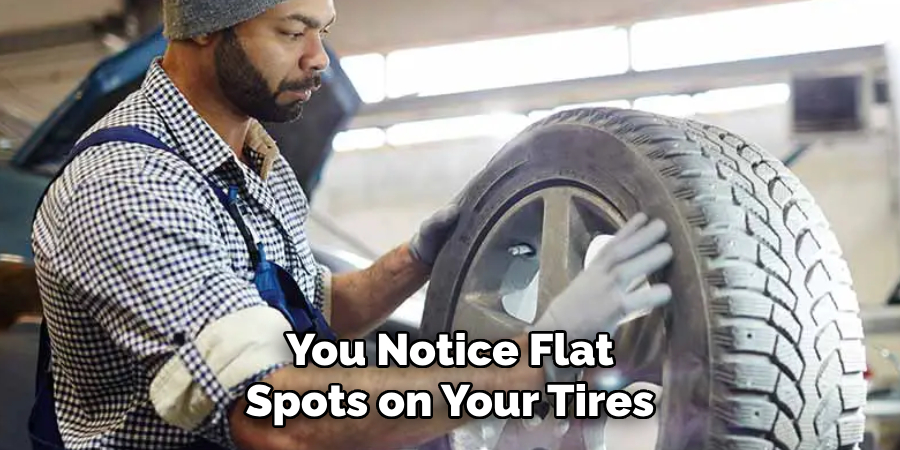
If you notice flat spots on your tires, the first step is to determine how severe they are. If they only cover a small area and are not too deep, you may be able to fix them with simple measures like driving your car more often or adjusting the tire pressure. However, if the flat spots cover a larger area and feel very deep, you may need to take more drastic measures.
Step 2: Rotate Your Tires
If your tires are only slightly flat spotted and still have enough tread depth, rotating them can help even out the wear and eventually eliminate the flat spots. This is because the tires will be in different positions on your vehicle, distributing the weight differently and allowing the flat spots to gradually disappear. You can rotate your tires yourself or take them to a professional to have it done.
Step 3: Adjust Your Tire Pressure
Overinflated tires can be more prone to developing flat spots. By reducing the air pressure in your tires, you’ll create a larger contact patch with the ground, which can help alleviate the flat spots. However, be sure to check your vehicle’s recommended tire pressure and do not exceed it. The recommended tire pressure can usually be found on a sticker inside the driver’s door jamb.
Step 4: Drive Your Car More Often
If you have a vehicle that sits unused for long periods, simply driving it more often can help prevent or fix flat spotted tires. This will vary depending on how severe the flat spots are, but regularly using your car can help redistribute the weight and eliminate flat spots over time. It’s also a good idea to take your car for longer drives to ensure the tires get warmed up and can better mold back into shape.
Step 5: Use Tire Warmers
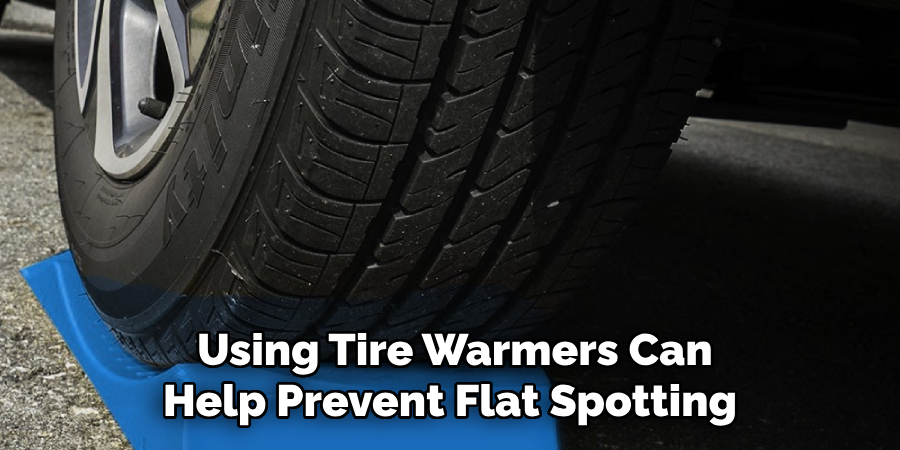
If you have a high-performance vehicle that is stored for long periods, using tire warmers can help prevent flat spotting. Tire warmers are essentially insulated blankets that wrap around your tires and keep them at a constant temperature, preventing any deformation from occurring. However, this option can be costly and is typically used by race car drivers or enthusiasts.
Step 6: Park on a Different Surface
If you have to leave your car in one spot for an extended period, try parking it on a different surface. For example, asphalt or concrete surfaces tend to be more gentle on tires than gravel or dirt. This may help reduce the risk of developing flat spots. It’s also important to avoid parking on uneven surfaces or areas where your car could potentially sink, as this can cause flat spots.
Step 7: Use Wheel Chocks
If you’re storing your vehicle for a long time, it’s important to use wheel chocks to prevent the tires from moving. This will reduce the likelihood of creating flat spots due to tire movement while stationary. it’s also important to ensure the chocks are properly placed on both sides of the tire and that they are secure.
Step 8: Replace Your Tires
If your flat spots are severe and cannot be fixed by rotating or adjusting tire pressure, it may be time to replace your tires. This is particularly true if the tires are already old and worn out. New tires will ensure proper performance and handling of your vehicle and prevent any further flat spotting. The cost of new tires may seem high, but it’s ultimately a safer and more cost-effective solution in the long run.
Step 9: Consult a Professional
If you’re unsure about how to fix flat spotted tires or if the damage is severe, it’s always best to consult a professional. A tire specialist can assess the condition of your tires and determine the best course of action.
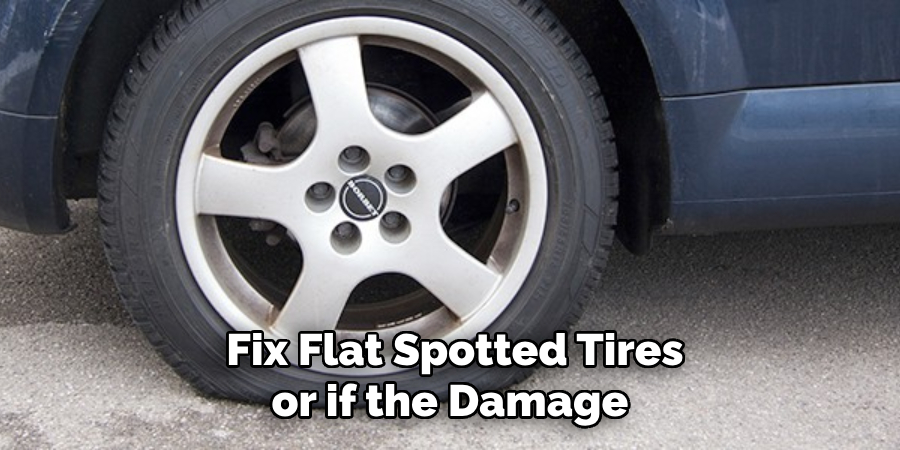
They may recommend tire replacement or provide other solutions to alleviate the flat spots. It’s also important to regularly have your tires inspected and rotated by a professional to prevent flat spotting from occurring.
Step 10: Prevent Flat Spots in the Future
Once you’ve addressed and fixed your flat-spotted tires, it’s important to take preventative measures to avoid the issue in the future. This includes regularly rotating your tires, driving your car more often, and parking on different surfaces.
It’s also important to monitor your tire pressure and adjust it as needed, as well as using wheel chocks when storing your vehicle for extended periods of time. By taking these measures, you can help prolong the life of your tires and avoid any potential flat spots in the future.
Following these guidelines can help you effectively fix flat spotted tires and prevent any further damage or inconvenience. By being proactive and taking proper care of your tires, you can ensure a safer and smoother driving experience for yourself and others on the road.
Frequently Asked Questions
Q1. Can Driving on Flat Spotted Tires Cause Any Damage to My Vehicle?
A1. Yes, if left unaddressed, flat-spotted tires can cause uneven wear and decrease the overall performance of your vehicle. It’s important to address and fix flat spots as soon as possible to avoid any potential damage.
Q2. Can I Fix Flat Spotted Tires by Driving My Car More Often?
A2. If the flat spots are not severe, regularly using your vehicle can help redistribute the weight and eliminate flat spots over time. However, if the damage is more significant, other measures such as rotating or replacing tires may be necessary.
Q3. How Can I Tell if My Tires Are Flat Spotted?
A3. You may notice a vibration or thumping sensation while driving, especially at higher speeds. Additionally, flat spots can sometimes be visibly seen on the surface of the tire. It’s important to regularly inspect your tires for any signs of damage or wear and address them promptly.
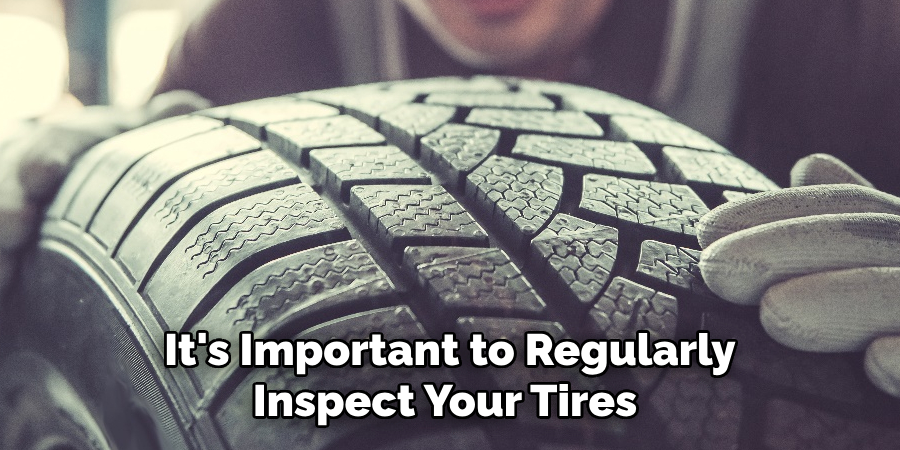
Q4. Can I Rotate My Tires Myself or Should I Get a Professional to Do It?
A4. You can rotate your tires yourself if you have the necessary tools and knowledge. However, if you’re unsure or uncomfortable with doing it yourself, it’s best to take your vehicle to a professional who can properly rotate and inspect your tires for any potential issues.
Conclusion
In conclusion, having flat spotted tires can be a frustrating and potentially dangerous issue for any driver. Flat spots can affect the overall performance of your vehicle and even compromise your safety on the road. However, by following these tips and techniques we have discussed, you can easily fix flat spotted tires and prevent them from happening in the future.
Remember to regularly check your tire pressure and rotate your tires to distribute weight evenly. If you do notice flat spots, try using different driving techniques to help minimize their impact or invest in some new tires if yours are severely damaged.
By taking care of your tires, you not only ensure a smoother ride but also extend their lifespan and save yourself money in the long run. Don’t wait until it’s too late, keep an eye out for any signs of flat spotting and address them immediately for a safer and more enjoyable driving experience! Thank you for reading our guide on how to fix flat spotted tires, stay safe on the road!

